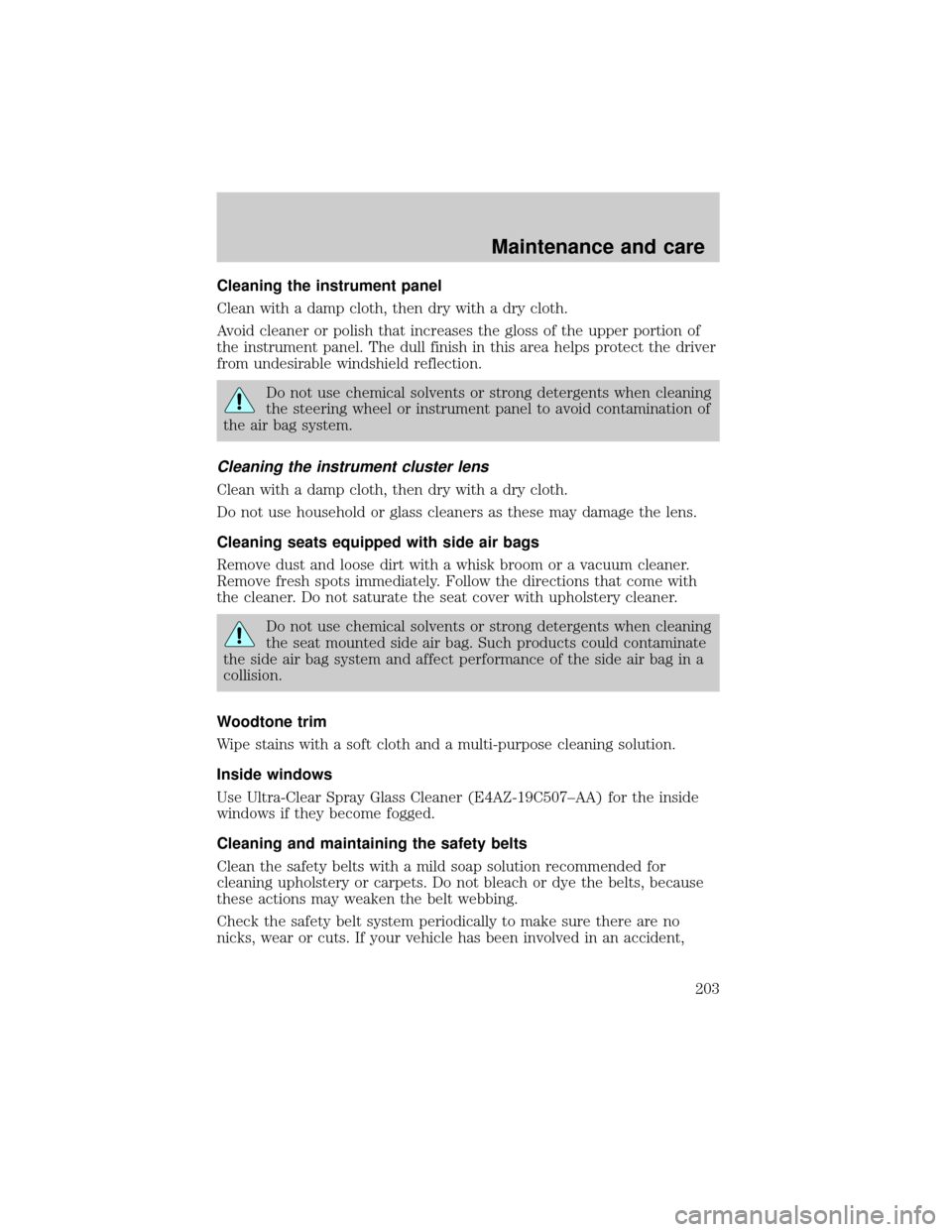Page 115 of 232
Parking brake
Apply the parking brake whenever
the vehicle is parked. To set the
parking brake, press the parking
brake pedal down until the pedal
stops.
The BRAKE warning lamp in the
instrument cluster illuminates and
remains illuminated (when the
ignition is turned ON) until the
parking brake is released.
Always set the parking brake fully and make sure that the
gearshift is securely latched in P (Park).
The parking brake is not recommended to stop a moving vehicle.
However, if the normal brakes fail, the parking brake can be used to stop
your vehicle in an emergency. Since the parking brake applies only the
rear brakes, the vehicle's stopping distance will increase greatly and the
handling of your vehicle will be adversely affected.
P!
BRAKE
Driving
115
Page 117 of 232

the engine compartment and the engine will not ªrev-upº when you push
further on the accelerator. This is normal system behavior.
The Traction Controlyon/off switch, located on the right side of the
instrument cluster, illuminates OFF when the system is turned OFF. The
Traction Controlysystem will revert to the ON position every time the
ignition is turned OFF and ON.
If you should become stuck in snow or ice or on a very slippery road
surface, try switching the Traction Controlysystem off. This may allow
excess wheel spin to ªdigº the vehicle out and enable a successful
ªrockingº maneuver.
If a system fault is detected the traction control active light will
illuminate, the Traction Controlyon/off switch will not toggle on and off,
and your vehicle should be serviced as soon as possible.
STEERING
Your vehicle is equipped with power steering. Power steering uses energy
from the engine to help steer the vehicle.
To prevent damage to the power steering pump:
²Never hold the steering wheel to the extreme right or the extreme left
for more than a few seconds when the engine is running.
²Do not operate the vehicle with a low power steering pump fluid level
(below the MIN mark on the reservoir).
If the power steering system breaks down (or if the engine is turned
off), you can steer the vehicle manually, but it takes more effort.
If the steering wanders or pulls, the condition could be caused by any of
the following:
²underinflated tire(s) on any wheel(s)
²high crown in center of road
²high crosswinds
²wheels out of alignment
²loose or worn components in steering linkage
Driving
117
Page 203 of 232

Cleaning the instrument panel
Clean with a damp cloth, then dry with a dry cloth.
Avoid cleaner or polish that increases the gloss of the upper portion of
the instrument panel. The dull finish in this area helps protect the driver
from undesirable windshield reflection.
Do not use chemical solvents or strong detergents when cleaning
the steering wheel or instrument panel to avoid contamination of
the air bag system.
Cleaning the instrument cluster lens
Clean with a damp cloth, then dry with a dry cloth.
Do not use household or glass cleaners as these may damage the lens.
Cleaning seats equipped with side air bags
Remove dust and loose dirt with a whisk broom or a vacuum cleaner.
Remove fresh spots immediately. Follow the directions that come with
the cleaner. Do not saturate the seat cover with upholstery cleaner.
Do not use chemical solvents or strong detergents when cleaning
the seat mounted side air bag. Such products could contaminate
the side air bag system and affect performance of the side air bag in a
collision.
Woodtone trim
Wipe stains with a soft cloth and a multi-purpose cleaning solution.
Inside windows
Use Ultra-Clear Spray Glass Cleaner (E4AZ-19C507±AA) for the inside
windows if they become fogged.
Cleaning and maintaining the safety belts
Clean the safety belts with a mild soap solution recommended for
cleaning upholstery or carpets. Do not bleach or dye the belts, because
these actions may weaken the belt webbing.
Check the safety belt system periodically to make sure there are no
nicks, wear or cuts. If your vehicle has been involved in an accident,
Maintenance and care
203
Page 227 of 232

low fuel warning light ..............10
octane rating ....................182,208
quality ......................................183
running out of fuel .................184
safety information relating to
automotive fuels .....................178
Fuses ...................................133,134
Gas cap (see Fuel cap) ............181
Gas mileage
(see Fuel economy) .................184
Gauges .........................................13
engine coolant
temperature gauge ...................14
fuel gauge ..................................15
odometer ...................................15
speedometer .............................13
tachometer ................................14
trip odometer ............................15
GAWR
(Gross Axle Weight Rating) .....123
definition .................................123
driving with a heavy load ......123
location ....................................123
GVWR (Gross
Vehicle Weight Rating) .............123
calculating ...............................123
definition .................................123
driving with a heavy load ......123
location ....................................123
Hazard flashers .........................131
Head restraints ...........................74
Headlamps ...................................16
aiming ......................................197
autolamp system .......................17
bulb specifications ..................196
daytime running lights .............16
flash to pass ..............................16
high beam ..............................8,16
replacing bulbs .......................190
turning on and off ....................16
warning chime ..........................13
Heating ........................................18heating and
air conditioning system ............18
Hood ..........................................149
Ignition ..................................43,208
Infant seats
(see Safety seats) .....................102
Inspection/
maintenance (I/M) testing .......189
Instrument panel
cleaning ...................................203
cluster ...................................8,203
lighting up
panel and interior .....................17
location of components ..............8
Jump-starting your vehicle ......142
Keyless entry system .................67
autolock .....................................69
keypad .......................................67
locking and unlocking doors ....68
programming entry code .........67
Keys
key in ignition chime ...............13
positions of the ignition ...........43
Lamps
autolamp system .......................17
bulb replacement
specifications chart ................196
cargo lamps ...............................17
daytime running light ...............16
headlamps .................................16
headlamps, flash to pass ..........16
instrument panel, dimming .....17
interior lamps ......................49,50
replacing
bulbs ............189,190,192,193,194
Lane change indicator
(see Turn signal) ........................47
Liftgate ...................................57,61
Lights, warning and indicator ......8
air bag ........................................12
anti-lock brakes (ABS) .....11,114
anti-theft ...................................11
Index
227